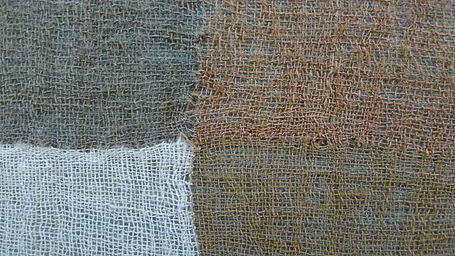EXHIBITIONS
Tapestries and Silverwork of the Colonial Andes: 1530-1830
Elena Phipps, Johanna Hecht and Cristina Esteras.
Metropolitan Museum of Art Sept- Dec 2004
The arrival of the Spanish in South America in 1532 dramatically transformed the Andean cultural landscape, changing societies that had evolved over thousands of years within less than one generation. The arts, however, continued to thrive amid the upheavals, and an unspoken dialogue evolved between Andean and European artistic traditions. A major exhibition of more than 175 works of art focusing on two uniquely rich and inherently Andean art forms that flourished during the Colonial period – tapestry and silverwork – will open at The Metropolitan Museum of Art on September 29, 2004. The Colonial Andes: Tapestries and Silverwork, 1530–1830 will present the finest examples of Inca and colonial garments and tapestries, as well as ritual and domestic silverwork, drawn from museums, churches, and private collections in South America, Europe, and the United States.

Interwoven Globe: Textile Trade 1500-1800
Curatorial team: Amelia Peck, Melinda Watt, Elena Phipps, John Guy, Marika Sardar, Amy Bogansky
Metropolitan Museum of Art Oct- Dec 2013
Beginning in the sixteenth century, the golden age of European navigation created a vigorous textile trade, and a breathtaking variety of textile designs subsequently spread across the globe. Trade textiles blended the traditional designs, skills, and tastes of their cultures of origin, with new techniques learned through global exchange, creating beautiful new works that are also historically fascinating.

The Peruvian Four-Selvaged Cloth: ancient roots, new directions
Elena Phipps,
Fowler Museum Oct 2013- Feb 2014
The tradition of weaving textiles with four finished edges—selvages—characterizes the creative process of the ancient weavers of Peru, known for their mastery of color, technique, and design. Without cutting a thread, each textile was woven to be what it was intended, whether a daily garment, royal mantle, or ritual cloth. This approach to weaving required the highest level of skill—even for the simplest of plain undecorated cloth—and reflects a cultural value in the integrity of cloth, not only in its design and function but in the way in which it was made.
This exhibition highlights selections from the Fowler Museum’s noteworthy collection of Precolumbian textiles and includes masterworks that demonstrate the high level of artistic achievement of Peruvian weavers. These range from the ancient ritual textiles from the early Chavin and Paracas cultures (500–100 B.C.E.) to the extraordinary garments of the Inca empire (1485–1532). While exploring the origins and development of this approach to weaving, the exhibition will also examine its influence on three contemporary artists―Shelia Hicks, James Bassler, and John Cohen—each of whom through his or her own artistic path has considered and transformed ancient weavers’ knowledge and processes into new directions.


The Red That Colored The World
Curators: Carmela Padillo, Barbara Anderson. Consultant: Elena Phipps
Museum of International Folk Art, Santa Fe.
May 17, 2015 - September 13, 2015
As a symbol and hue, red has risen to the pinnacle of the color spectrum. Yet few know of its most prolific and enduring source: Cochineal.
From Antiquity to today, as symbol and hue, red has risen to the pinnacle of the color spectrum. Throughout art history, a broad red brushstroke has colored the finest art and expressions of daily life. Yet, while most people know red, few know of its source: American Cochineal, a tiny scaled insect that produces carminic acid. Fewer still know the story behind its explosive global spread after its first encounter by Spain in 16th century Mexico. Following the cochineal bug from Central American to the United States, Europe and beyond, Red displayed more than 130 objects from the Museum’s collection, private lenders and internal museums. Each object reflected the unique uses of color and how one bug has influenced art, culture and trade throughout the world.
